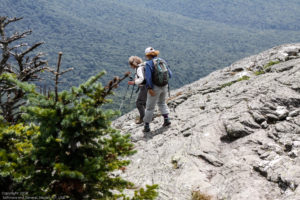Today’s Tidbit of history, in NYS. – – – Can you name the first established state park in NYS & the USA?
Need some time to think about it?
Today’s Tidbit of history, July 15th 1885, the Niagara Reservation (think immediately adjacent Niagara Falls) was dedicated, and this area would become the first state park in not only NYS but also in the entire USA. Today this park goes by the name of: Niagara Falls State Park.
Now you know just which was the first park in NYS, a park that started it all. That oldest park is of course now but one park in the NYS Parks System … a system of many great and unique places we all can appreciate for recreation and exploration.
Here’s one link to a segment of info about the Niagara Falls State Park area. >>> https://www.niagarafallsstatepark.com/niagara-falls-state-park (The info is in italics below. Note the struggles to reclaim the natural beauty of the area -vs- industrialists, as included in the below prose.)
Today, the park’s signature attraction, the majestic Niagara Falls, is the dramatic apex of the free-flowing waters of four of the Great Lakes into the Niagara River Gorge. But that wasn’t always the case. During the Industrial Revolution of the early 19th Century, the natural beauty of Niagara Falls began to suffer as earnest industrialists built mills and factories along the river to harness its power. By the late 1860s, a small band of early environmentalists, including landscape architect Frederick Law Olmsted, who were concerned over the river’s waning flow, founded the Free Niagara movement. The movement believed that the natural beauty of the land surrounding the Falls should be protected from commercial interests and exploitation, and remain free to the public. Members urged New York State to reclaim the Falls and the surrounding area.
After more than 15 years of pressure, the Free Niagara crusaders won their battle. The Niagara Appropriations Bill was signed into law in 1885, creating the Niagara Reservation and signifying possibly the most important event in Niagara Falls’ history. New York State Assemblyman Thomas Vincent Welch was a prominent figure in getting the bill signed and later went on to serve as the first superintendent of America’s oldest state park.
Frederick Law Olmsted, perhaps best known for designing New York City’s Central Park, believed that parks should be places of natural beauty, where “the masses could be renewed.” This philosophy was applied throughout Olmsted’s landscape design for Niagara Falls State Park, with an entire network of footpaths through wooded areas and along the banks of the Niagara River.
Today, the oldest American State Park retains Olmsted’s vision by staying committed to maintaining native vegetation, preserving its unparalleled vistas and providing public access. Visitors from around the world are entranced by the thundering wonder of Niagara Falls, a grand tribute to the men and women who fought to preserve it for all.
Here’s another link to a segment of info about the Niagara Falls State Park area. >>> https://www.niagarafallsstatepark.com/niagara-falls-state-park/history
And, … here is a link to waymarking info about the park. >>> http://www.waymarking.com/waymarks/WM1Q2H_Niagara_Reservation
Enjoyment of NYS parks comes in many forms. You can visit the NYS Parks system website for more info about NYS parks, facilities, programs, etc. Please help keep our parks clean and pristine. And remember, “I Love My Park Day”, a NYS initiative for volunteers to help pitch-in at NYS parks in an organized effort is annually scheduled in early May.
Here’s a teaser. Do you know which NYS park is the smallest?

